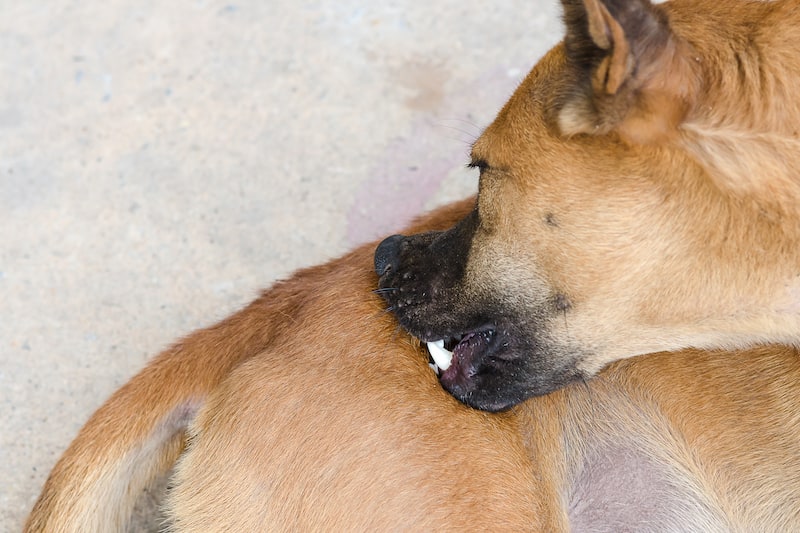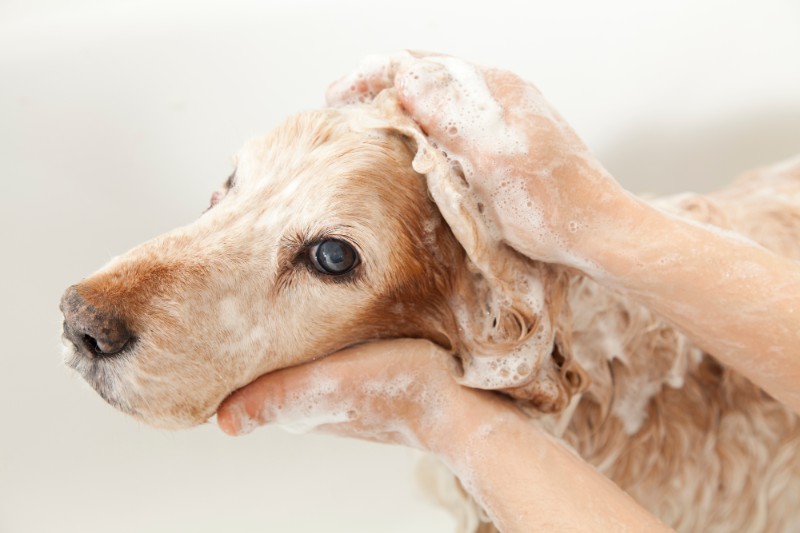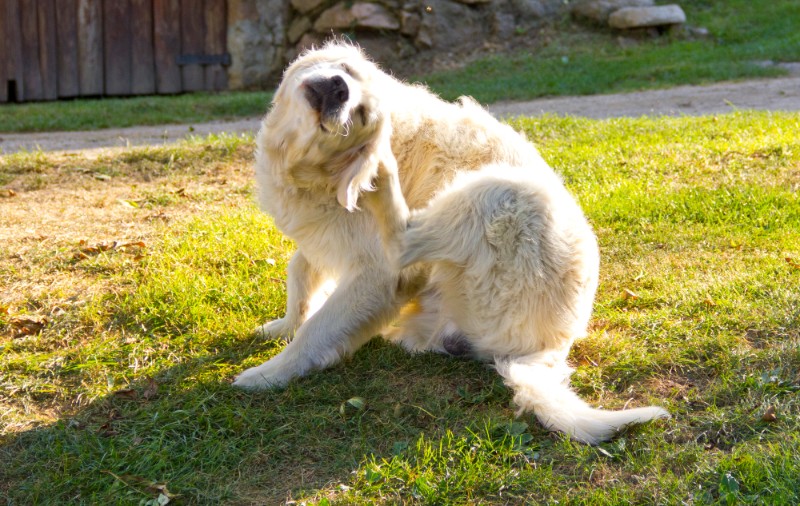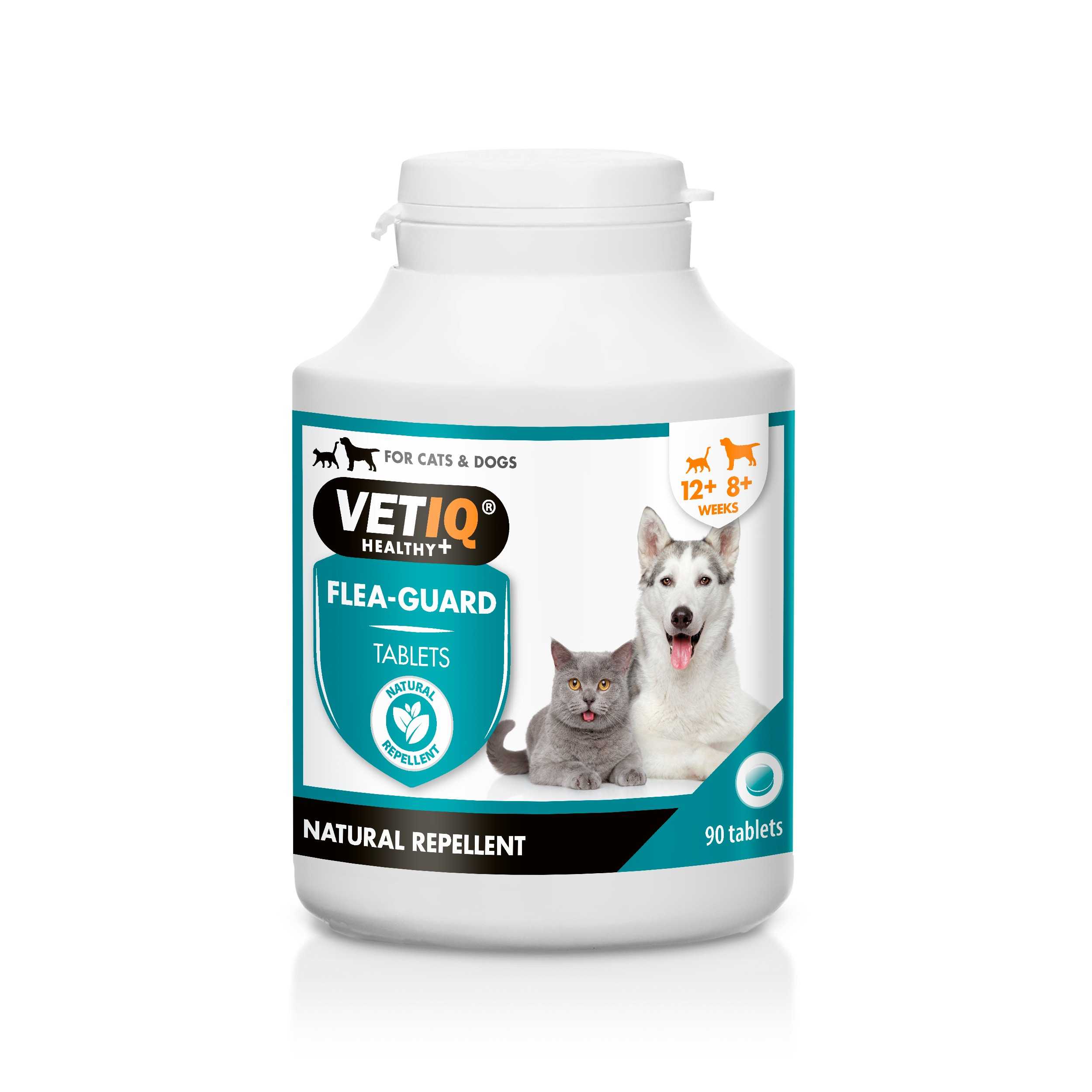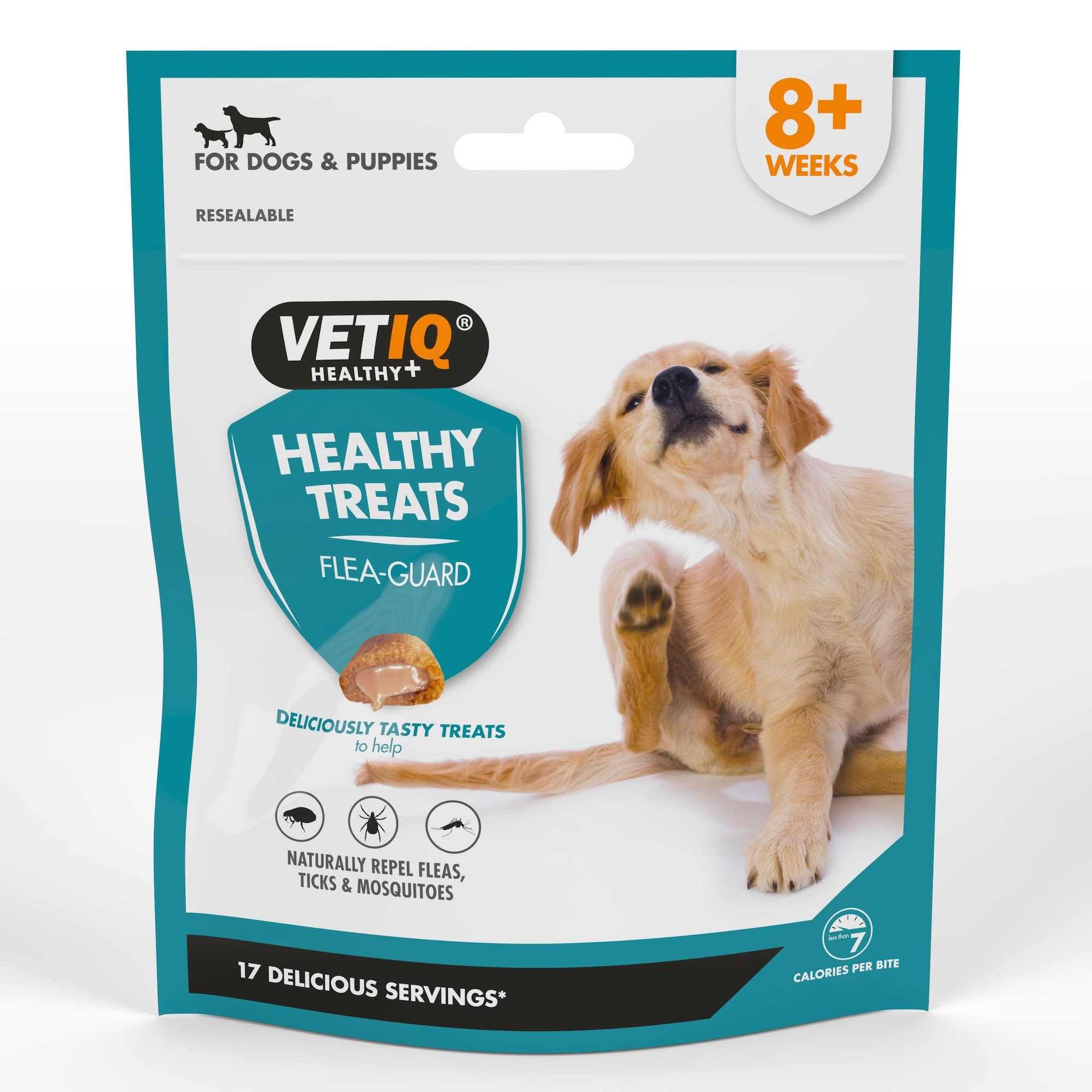How do dogs get fleas? Most dog owners are only too familiar with these pesky critters!
Whether you and your dog have worked through a flea infestation before or if you’ve only seen the myriad of products and veterinary warnings about flea protection, the fight against fleas is something that dog parents can’t escape!
Unfortunately, it’s very common for dogs to get fleas, making a focus on awareness and prevention the most important thing as you proceed through regular care for your pup. Dogs can catch fleas from various sources, including from other dogs and other animals around, the environment, and even human clothing.
Let’s dive in to discover more about how dogs get fleas, but more importantly, how you get rid of them!
Understanding how dogs get fleas
Fleas can find their way to your dog in several ways:
- Interaction with wild animals such as rodents, birds, raccoons, or deer
- Playtime with other pets who have fleas
- From your home (yes, fleas can even hitch a ride on you and take up residence in your house)
- Dog kennels, groomers, or other facilities that see lots of dogs come and go through their doors
- From their walks or playtime outdoors, where fleas may be lying in wait
Why do dogs get flea infestations so often?
Indeed, there are reasons why dogs in particular so often struggle with flea infestation. Taking a look at the above list of risk factors makes it easier to understand why dogs are more prone to fleas than other animal companions.
Flea infestations can lead to significant health risks for dogs, making prevention and treatment crucial.
Because dogs tend to spend more time outdoors and socialising in parks with other pets (unlike indoor cats, for instance, who don’t need to venture outside for exercise or to use the bathroom), dogs simply provide fleas with more opportunities to latch on and hitch a ride in their fur.
How to spot fleas and flea dirt on dogs
Another important part of flea prevention is keeping a careful eye on your pup for signs that he may be struggling with the beginnings of a flea infestation.
Inspecting a dog’s skin for flea dirt and bites is crucial for early detection of fleas. Luckily, it’s not difficult to detect whether or not your dog has fleas since these insects are visible to the naked eye and typically remain atop the skin rather than burrowing within the skin like other parasites.
Keep an eye out for common signs of fleas while grooming or petting your dog, taking care to pull apart your dog’s fur and check their skin and paws too.
You may also notice your dog scratching more frequently or biting at his skin. Another sign of fleas is the presence of “flea dirt,” tiny black specks that are flea faeces. Yuck!
Common myths about fleas
There are many myths floating around about fleas, making it tough for pet owners to get the facts straight. One common misconception is that fleas only affect pets with poor hygiene. In reality, even the cleanest dogs can get fleas from outdoor environments, other animals, or human clothing.
Another myth is that fleas don’t affect humans—while they prefer animals, fleas can still bite people! Lastly, some believe that once winter comes, fleas disappear. Unfortunately, fleas can thrive indoors year-round, making consistent prevention important no matter the season.
The health risks of flea infestations
Fleas aren’t just an itchy annoyance—they pose serious health risks to your dog. Flea allergy dermatitis is a common condition, where dogs experience intense itching and inflammation from flea bites. In more severe cases, dogs can develop anaemia, especially if they are smaller or have a heavy infestation. Fleas can also transmit tapeworms if your dog accidentally ingests them while grooming. These parasites live in your dog’s intestines, stealing nutrients and causing digestive issues. Left unchecked, infestations can lead to long-term health problems, which is why swift action is key.
Providing flea treatment for dogs
As soon as you’ve noticed fleas or flea eggs on your dog, don’t hesitate. Flea bites can cause significant discomfort and health issues for dogs, including excessive scratching and skin inflammation. Flea allergy dermatitis is a common allergic reaction caused by flea bites, leading to severe itching and skin inflammation.
A successful treatment plan, however, means more than just ridding your dog of fleas—you’ll need to eradicate the fleas from your home, too. Unfortunately, this means more than tackling just the leap-happy insects reminiscent of spare poppy seeds that fall from your morning bagel.
Flea eggs can invade the home environment and contribute to ongoing infestations. To truly purge a space of fleas, it’s essential to combat fleas in all four stages of their life cycle.
These stages begin with flea eggs, which hatch into larvae, develop into pupae, and eventually become adult fleas. Ridding your home of only adults won’t help you or your dog, as any younger stages will simply mature into adult fleas and be on the attack again in no time. Flea shampoos can provide immediate relief from fleas but are not a long-term solution.
Effective treatment to prevent or kill fleas is crucial to manage infestations. Regular flea treatments for pets and comprehensive home treatments are necessary to ensure a flea-free environment. It is crucial to kill adult fleas to prevent infestations, and veterinarians can recommend the best products for this purpose.
Killing fleas requires both immediate and long-term solutions to manage infestations. This includes specific medications and preventative measures that involve treating both pets and their living environments.
DIY flea control methods
If you’re interested in natural solutions, there are several DIY flea control methods you can try. One option is using essential oils like lavender or cedarwood, which have flea-repelling properties. Be sure to dilute them properly and consult your vet before applying them to your dog’s skin. Another option is sprinkling food-grade diatomaceous earth around your home—this natural powder dehydrates and kills fleas without harsh chemicals. Flea-repelling plants, like rosemary and lemongrass, can also help keep fleas away from your yard. While DIY methods can assist, they should complement vet-recommended treatments for full protection.
Prevention is the best medicine for fleas
As a pet owner, your top priority is keeping your dog safe from fleas, ticks, and other pesky critters. While treating them is possible, being able to prevent fleas is far easier and more effective for your pet’s long-term health.
Regular use of flea prevention products and maintaining a clean environment are essential strategies for keeping fleas at bay. By staying ahead of the problem and protecting your dog from fleas before they strike, you’ll save yourself and your furry friend the discomfort and hassle of dealing with an infestation.
Here at VETIQ, we have some excellent natural flea prevention options available to help keep your pet pest-free:
- VETIQ Flea Guard Tablets
VETIQ Flea Guard Tablets offer a safe and effective natural flea repellent for your dog. This blend of B vitamins, yeast, zinc, and garlic works to keep fleas, ticks, and mosquitoes away while also reducing unpleasant pet odours. In addition, these tablets help maintain a glossy coat and healthy skin, ensuring your dog looks and feels their best while staying pest-free.
- VETIQ Flea Guard Granules
VETIQ Flea Guard Granules provide another 100% natural option for flea prevention. With a blend of B vitamins, yeast, zinc, and garlic, these granules deter fleas, ticks, and mosquitoes while promoting a healthy, glossy coat and skin. They also help eliminate that “soggy doggy” smell, leaving your dog smelling fresh and clean without the use of harsh chemicals.
- VETIQ Healthy Treats Flea Guard
VETIQ Healthy Treats Flea Guard contains a unique blend of natural ingredients to deter fleas, ticks, and mosquitoes. These tasty treats feature a crunchy shell with a cream-filled centre that combines brewer’s yeast, rich in B vitamins, with Omega 3 & 6 to support your dog’s skin, coat, and immune system. Added vitamins E, A, and D help promote overall health, while coconut oil with lauric acid provides extra immune support. These treats contain no artificial colours, flavours, or preservatives and naturally keep fleas at bay, making them an easy, beneficial addition to your pet’s diet.
Prevent fleas and protect your furry bestie
Preventing fleas is always easier than treating them, and it’s something every pet parent should prioritise. Be proactive—check your dog regularly for fleas and start using a flea prevention product that suits your lifestyle. Our range of Flea Guard products is designed to make flea prevention simple, safe, and effective. As always, consult with your veterinarian if you have questions about the best flea prevention approach for your dog.
For more tips on keeping your pet healthy and happy, be sure to visit our blog, where you’ll find expert advice on pet care, wellness, and much more.




